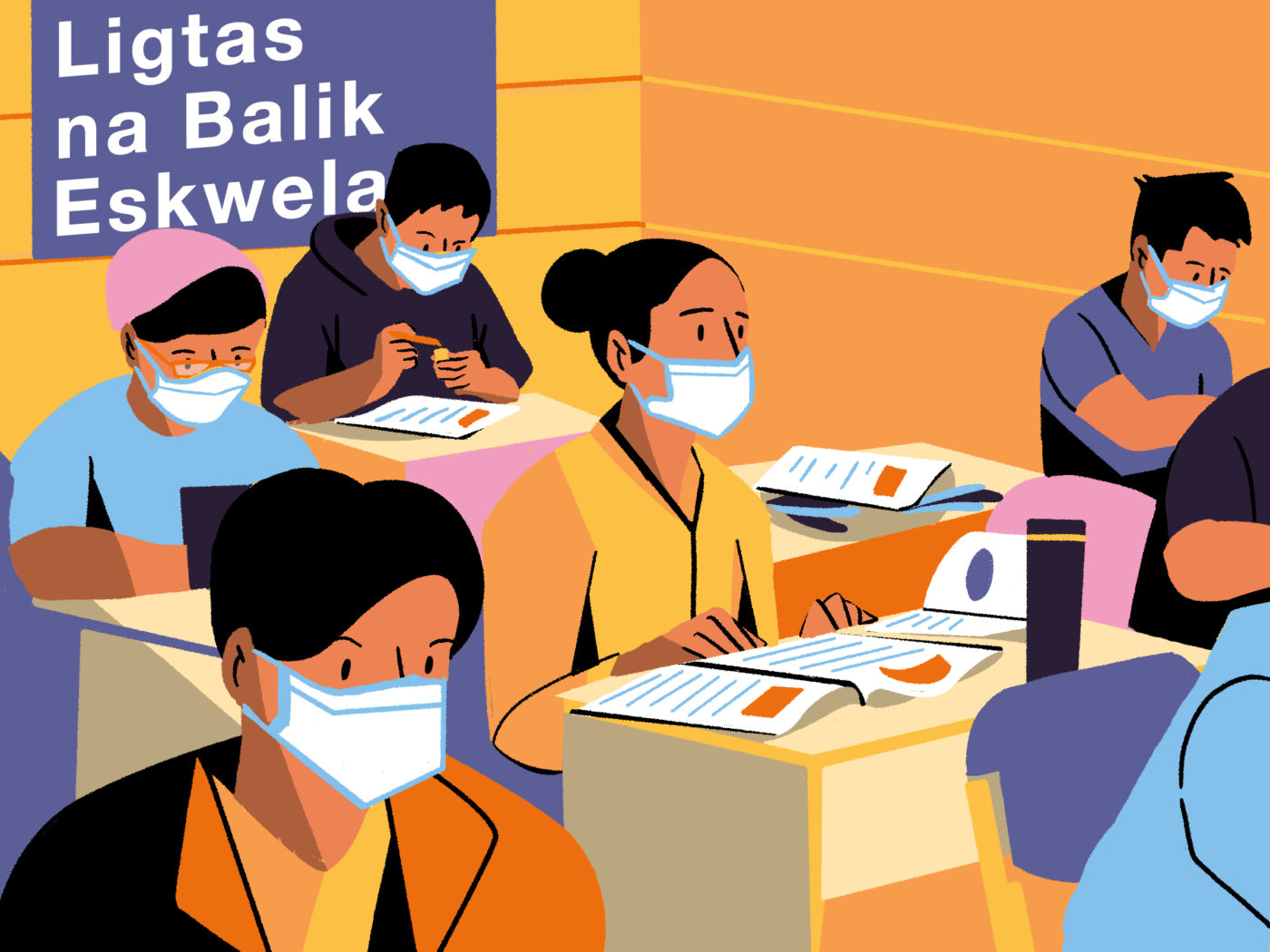ON-SITE CLASSES will resume in 90 private and public schools on November 15 as of writing, following the approval of the Department of Health (DOH) and Department of Education’s (DepEd) Joint Memorandum Circular (JMC) No. 2021-01. This development ensued as calls to hold on-site classes heightened and the Philippines remained as the only Asian country that had yet to fully reopen schools prior to the approval of the JMC.
Though the program is exclusive to minimal risk areas, relatively high COVID-19 active case counts and a slow nationwide vaccination program might complicate the pilot reopening. However, Higher Education Institutions such as the Ateneo School of Medicine and Public Health (ASMPH) could serve as a model for K-12 schools, given the institution’s long-standing success in avoiding community transmissions.
While the financial gap between these institutions could make a comparison inadequate, K-12 schools can still make use of ASMPH’s lessons as they fine-tune their processes, which are far from perfect amid the pandemic.
A complete overhaul
As guided by JMC No. 2021-01, DepEd’s pilot program is underpinned by the framework of “shared responsibility” wherein all stakeholders collectively coordinate for the participants’ safety. As part of this commitment, only students that have full parental consent and vaccinated teachers will be allowed to participate.
Taking this similar framework, ASMPH’s face-to-face program participants are now fully vaccinated, ASMPH Dean Cenon Alfonso stated. Nonetheless, holistic institutional overhauls must also be pursued. Hence, the participants of ASMPH’s Sequential Limited Class Exposure (SLICE) and Clinical Access Rotations enjoy shuttle services as part of an open-bubble system aimed at reducing exposure to the outside environment. DepEd’s guidelines, in contrast, allow participants to use either public or private transportation. This does not mean, however, that public transportation should not be used—the caveat is that contact tracing will be harder.
Besides mobility considerations, classroom setups have also drastically changed. In SLICE, on-site classes are focused on laboratory and practical exercises initially conducted semestrally but are compressed into two to three-week-long periods. The classrooms are designed to only accommodate up to 10% of their actual capacity given the volatile COVID-19 alert levels; from a classroom of 30, only 5-8 students are allowed.
On the other hand, DepEd will limit classrooms to 12-20 learners depending on the year level. These face-to-face classes will also be implemented to help students in reviewing lessons that require teachers’ direct intervention in contrast to lessons that are skill-based.
Apart from curricular and structural distinctions, ASMPH aimed to alleviate the financial burden on students should they contract COVID-19 by providing them medical insurance on top of PhilHealth. Alfonso also shared that they use an online contact tracing application to efficiently submit documents required by national agencies such as the DOH and the Commission on Higher Education. Meanwhile, DepEd schools will not offer added insurance and will still rely on log sheets and paper documentation.
However, it must be noted that ASMPH’s adjustments and funding have been facilitated by the school’s private stakeholders, Alfonso said. Conversely, the DepEd’s program is limited by its financial and technical capacity similar to the DOH, which have had auditing problems amid the pandemic.
Weighing the experiences
These institutional measures make face-to-face classes possible, thereby allowing students to reap their benefits, according to ASMPH Year Level 6 Executive Officer Karl Carandang and Student Council President Shalom Hernandez. “Last year, we had to do physical exams on our own family members. So you’re not entirely sure if what you’re doing is right. When you’re in face-to-face [classes], you get feedback as soon as you do it. So the learning process is really better,” Hernandez stressed.
Nonetheless, the heavy preparations which ASMPH students must adhere to for their safety have also made education more costly. With medical clearances, vaccinations, quarantine periods, and infection control training, on-site classes are different from the pre-pandemic counterpart, the students said.
As a scholar, Hernandez mentioned the financial help of the shuttle system and the council’s Reverse Transcription-Polymerase Chain Reaction subsidy program. Despite these, students from the provinces still face logistical and financial challenges that the school cannot shoulder at this time, such as accommodation.
There is also the prevailing risk of safety as breakthrough cases are still possible, Carandang said. This possibility coupled with the complex logistics makes implementing a similar program more difficult for schools with a bigger population.
To aid larger educational institutions, Alfonso suggested creating blocks of 1,000-2,000 students to be overseen by assistant deans and a separate operational team. However important clustering students may be, Alfonso still stressed the role of the faculty in all these adjustments. “We are very fortunate that our faculty is very nimble because without the faculty, I don’t think we can move—the [ASMPH] administration is inutile,” he said.
Fraught with uncertainties
Given the number of stakeholders involved, there are infinitely many things to consider in terms of education in the new normal. Despite the attempts of the Philippine education system to adapt to the online setup, Hernandez expressed that it only goes so far when it benefits the select few. “For now, the least are left behind. I think, just with anything in this pandemic, it’s not new. It’s just more seen—it now affects more people.”
As such, reopening efforts have intensified in order to address this issue, but notwithstanding criticisms. After all, the pilot program alone requires funds that the public education system already lacks. Before anything, conducting DepEd’s pilot program with great rigor will be necessary not only for the safety of our students—but for their future as well.
Editor’s Note: The Inter-Agency Task Force for Emerging Infectious Diseases (IATF-EID) has since permitted the limited reopening of on-site classes for all college programs in localities under Alert Level 2.




